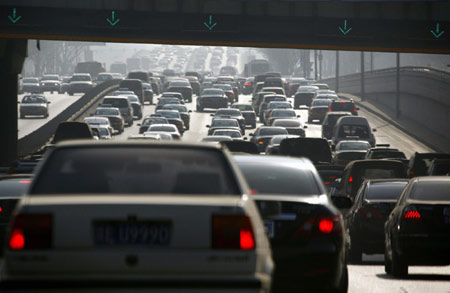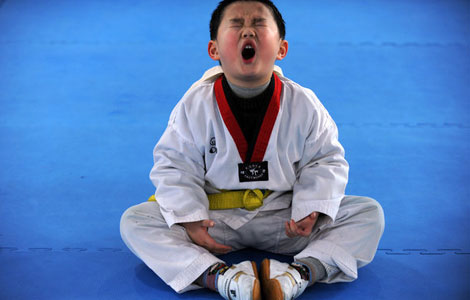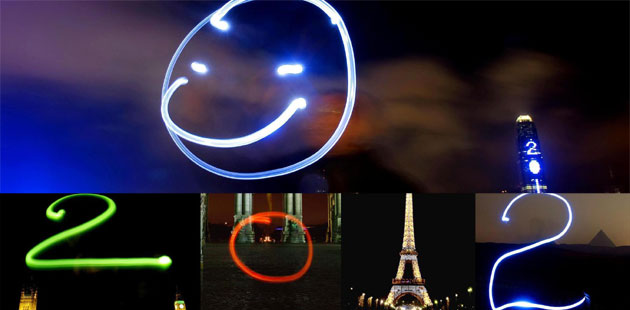China 2011 car sales rise at slowest annual pace
Updated: 2012-01-16 15:23
(chinadaily.com.cn/Agencies)
|
|||||||||||
|
 Cars drive along a main road in central Beijing on Jan 12, 2012. Car sales in China climbed 5.2 percent in 2011, the slowest pace since the nation's car culture took off at the turn of the century, as consumers shunned local brands after Beijing scrapped tax incentives for small cars. [Photo/Agencies] |
Car sales in China climbed 5.2 percent in 2011, the slowest pace since the nation's car culture took off at the turn of the century, as consumers shunned local brands after Beijing scrapped tax incentives for small cars.
Even so, solid demand for foreign marques helped China keep its ranking as the world's top market, with total car sales of 14.5 million, about 2 million more than in the United States last year.
The outlook for 2012 is expected to improve, thanks to still-robust automobile demand in lower tier cities, which are catching up with major metropolitan areas as major growth engines, industry observers say.
"Local carmakers were hurt in the past year after the incentives were gone, but most overseas players remained in pretty good shape," said Sheng Ye, associate research director at industry consultancy Ipsos' Greater China region.
Beijing in 2009 introduced a stimulus package, including tax incentives for cars with engine sizes of 1.6 liters or smaller, a move that spurred car sales and propelled China to surpass the United States as the world's largest auto market.
The incentives were scrapped in 2011, sending many who had intended to pick a Chery or Geely car to get the perks, to the showrooms of General Motors and Volkswagen.
Local government steps to tackle traffic gridlock, such as imposing quotas on new car registrations in Beijing, also crimped car sales. In the Chinese capital, new car deliveries plunged 56 percent to 403,500 in 2011, official data showed.
Collectively, local brands made up 29.1 percent of car sales in 2011, down 1.78 percentage point from a year ago, according to the China Association of Automobile Manufacturers (CAAM).
German and US brands, however, have both gained ground, up by 1.91 and 0.77 percentage points, respectively.
While some industry insiders remain cautious on the 2012 outlook, many others, including Wang Fengying, president of top Chinese SUV maker Great Wall Motor, and Xu Changming, general director with the Information Resource unit of the State Information Center (SIC), are betting on a 10 percent gain on growth potential in smaller, inland cities.
CAAM forecast that car sales for 2012 would grow by 9.5 percent.
Statistics provided by the SIC showed tier 1 cities contributed 30.7 percent of car sales in 2010, down from 35.7 percent in 2007, while the ratio in tier 3 cities has climbed to 29.1 percent from 24.7 percent during the period.
Still, only about 30 out of 1,000 people own cars in the northwestern provinces such as Gansu and Qinghai now, a far cry from more than 200 in the Chinese capital city, according to Ipsos.
In December, passenger car sales rose 4.6 percent to 1.37 million in China. Overall vehicle sales for the full year, including trucks and buses, came to 18.51 million, up 2.5 percent, CAAM said.
In the United States, the 12.5 million light vehicle sales in 2011 represented a 10.3 percent year-on-year rise.
In Japan, however, car sales plunged 16.7 percent last year to a 43-year low due to production disruptions in the wake of the devastating earthquake and tsunami in March and recent flooding in Thailand.
- Prepaid card regulation misses mark
- Proposal for global energy oversight
- Chinese stocks slump over 1.7% Monday
- Shanghai index 'set for greater losses'
- CEO: 'Golden Year of the Dragon' for BMW
- China slashes US sanction on Chinese firm
- Q4 GDP growth expected to drop below 9%
- Beijing home prices drop 11.3% in 2011








